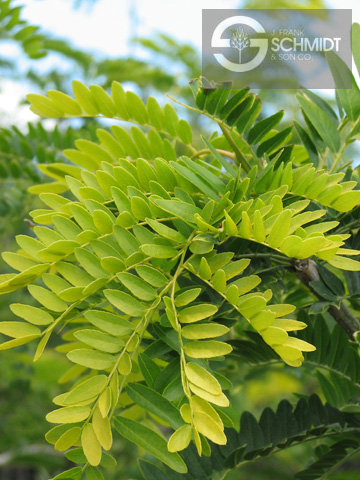| PSC 2620: Woody Trees and Shrub | Course Home | Week 5 |
Gleditsia triacanthos var. inermis - Common Thronless Honeylocust
Plant Viewer
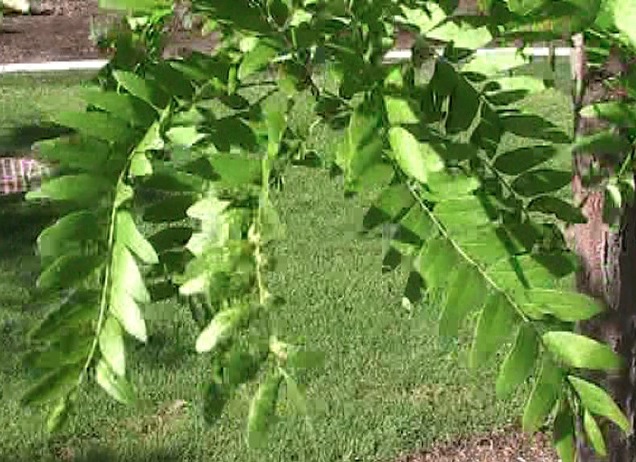 |
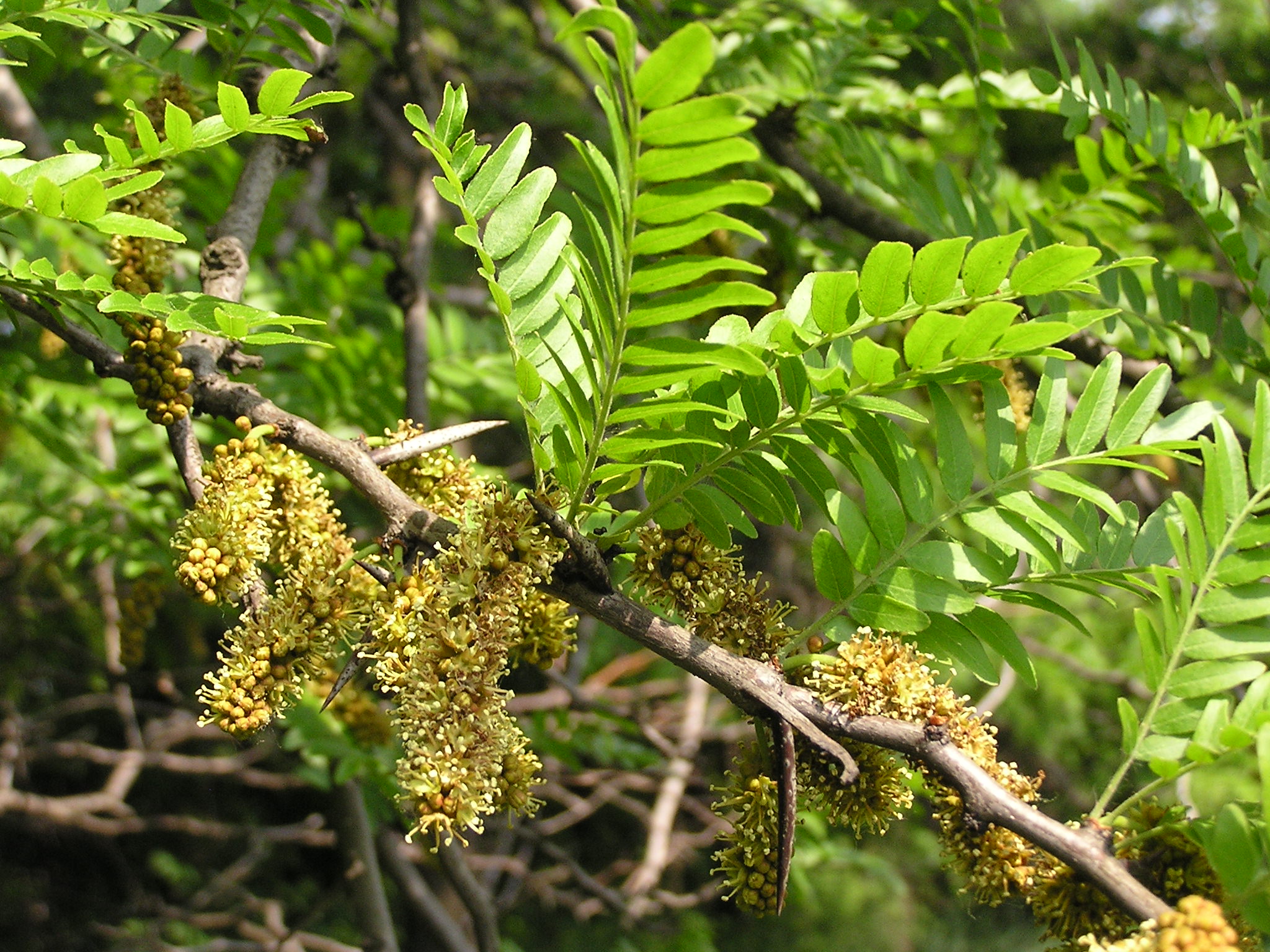 |
| The leaves are pinnately or bipinnately compound and composed of 1/3 to 1 1/2 inch long leaflets. | Panicles of flowers emerge in late spring. Image: Andrew Butko |
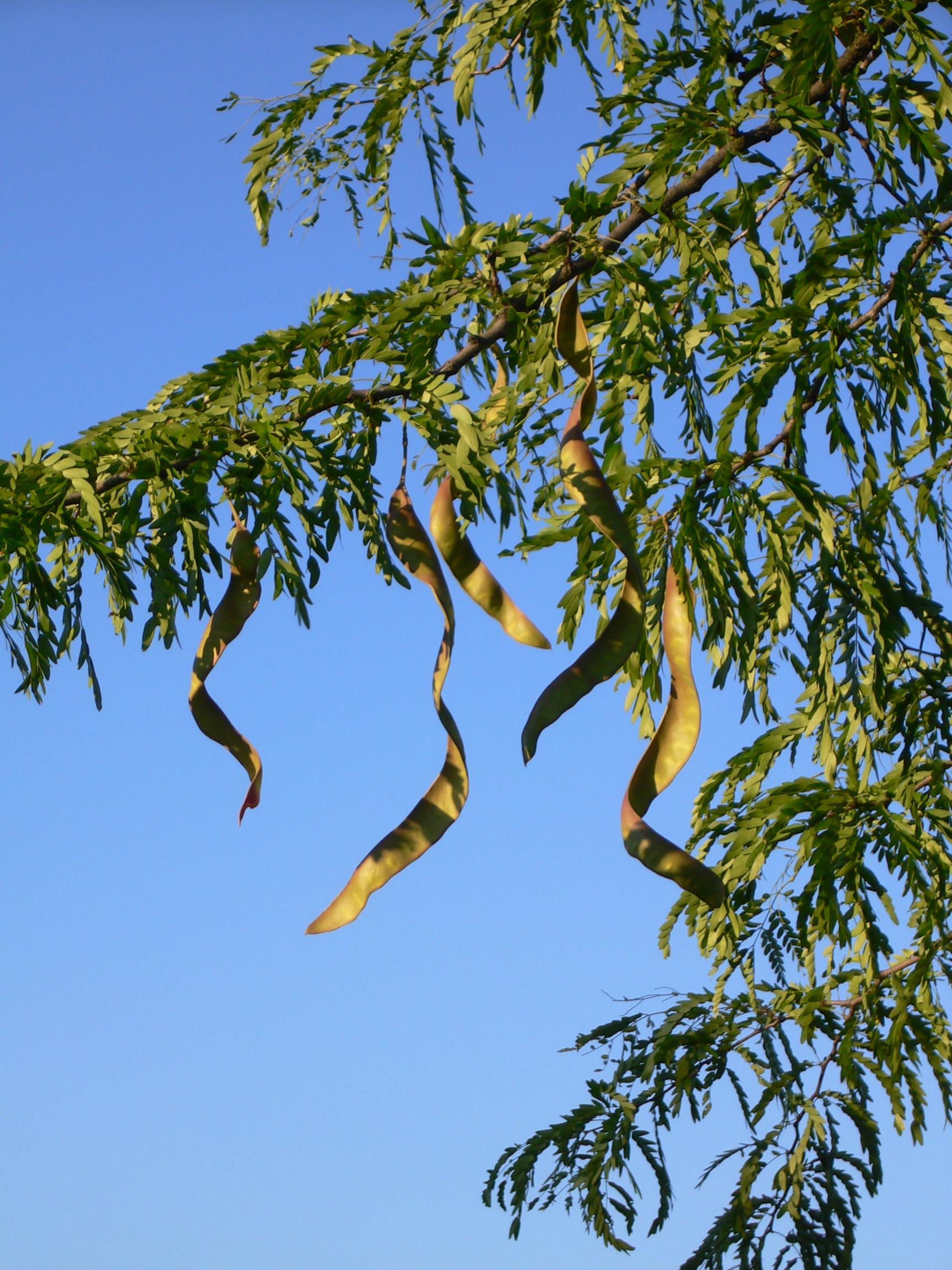 |
|
| The large seed pods are messy and unsightly. Many of the newer cultivars have produce very few pods. Image: Wikipedia |
Plant Description
Gleditsia triacanthos inermis is a hardy and fast growing tree that is able to tolerate a wide range of soil and moisture conditions. At maturity it will reach 50-60 feet tall, with and equal spread. It has a broad and open branching habit, with young branches often exhibiting a zig-zag appearance. The bark is gray-brown in color and develops large furrows when it matures.
Honeylocust leafs out very late in the season, so late in fact that sometimes even I wonder whether the specimen in my yard has died each spring. The leaves are pinnately or bipinnately compound. They are typically 6-8 long, with some individual leaves being much longer, and light green in color. The small leaflets are only 1/3 to 1 1/2 inches long, and are lanceolate in shape. The fine texture of the leaves produces a light shade that permits the planting of annuals or perennials underneath it. The leaflets turn yellow in that fall and drop from the tree followed by the petiole.
In late spring, panicles of greenish-white blossoms appear on the tree. Though they are not visually stimulating, they do have a strong, sweet fragrance. By summertime, large pea-pod seeds (7-8 inches long) begin to form on the tree. In the fall, these turn a dark brown color and will fall from the tree. They can be messy, but fortunately many of the new cultivars produce few seeds.
Landscape Use
Its excellent tolerance of salt and poor soils, as well as its minimal leaf litter, makes it a good choice for a street tree. It makes an attractive shade tree that I would describe as the type of shade that you would like to have a picnic under.
Points of interest
Never get a Honeylocust that is not thornless, as the thorns are extremely hard and sharp and can grow to be very large. It is susceptible to both wind and snow breakage due to its weak wood.
In many parts of the problem there are serious disease problems impacting Honeylocust populations, including leaf spot, cankers and borers. However, I have not found these diseases to be troublesome in our climate.
Notable Cultivars
Shademaster The most popular cultivar of Honeylocust it produces a deeper shade than other varieties.
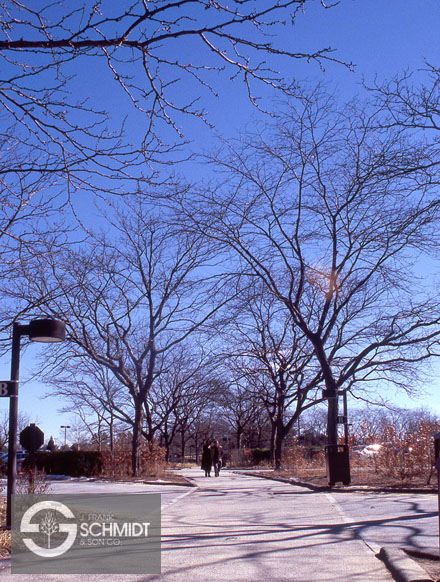
Imperial A smaller variety (30-35 feet high), it has a very good branching habit and very fine leaves.
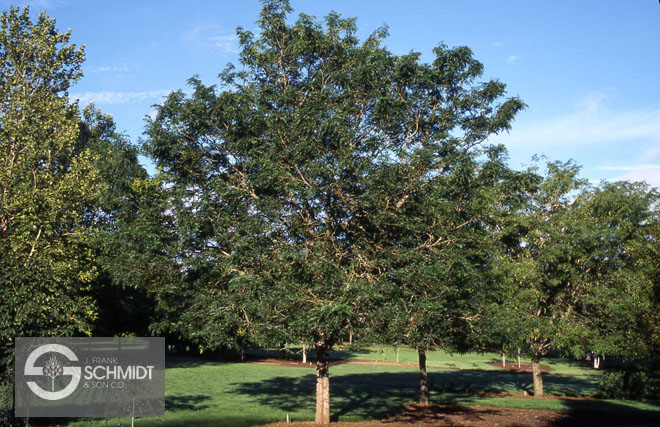
Skyline This variety has a more upright growth habit than other varieties, making it more suited for narrow spots or as a street tree. It reaches 40 feet high.
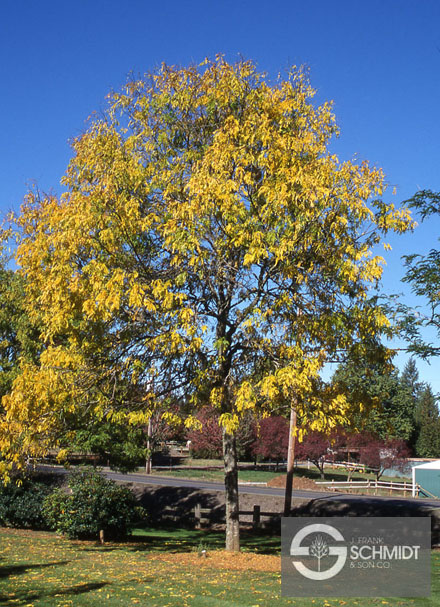
Sunburst A smaller tree than many other Honeylocusts (30-35 feet high), it has a good branching pattern and the new foliage emerges bright yellow before turning a lime green color.
